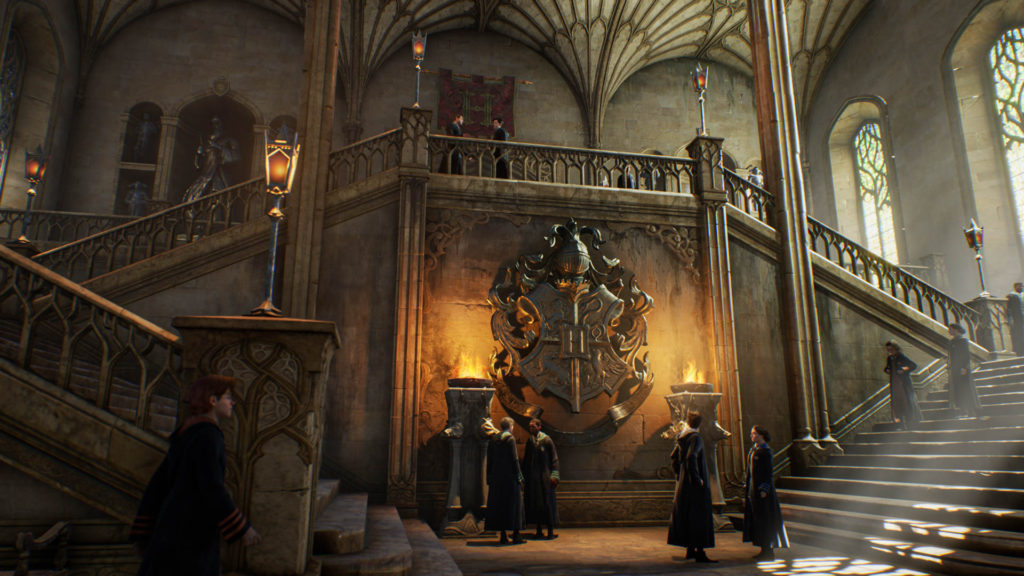
Provided by Avalanche Studio
Hogwarts Legacy of Antisemitism?
Hogwarts Legacy, by Avalanche Studio, is poised to be the game that many fans of Harry Potter have been dreaming of since reading the first book. It’s giving us a chance to explore the magical school in such detail that it’s like we’re living there, on our own journey through the Wizarding World. So why does the air around this game feel murky? There are several specific communities that are speaking out against this game. Stemming from Rowling’s focus on praising and supporting Trans Exclusionary Radical Feminists (TERFs) who, as the name implies, don’t support trans people in their fight for equality, as well as Rowling’s speeches being used against the trans communities in arguments for anti-trans laws throughout the United States, many queer folks take issue with the author continuing to profit off of this franchise. Maybe a bit less obvious to some, but the Jewish community isn’t happy either.
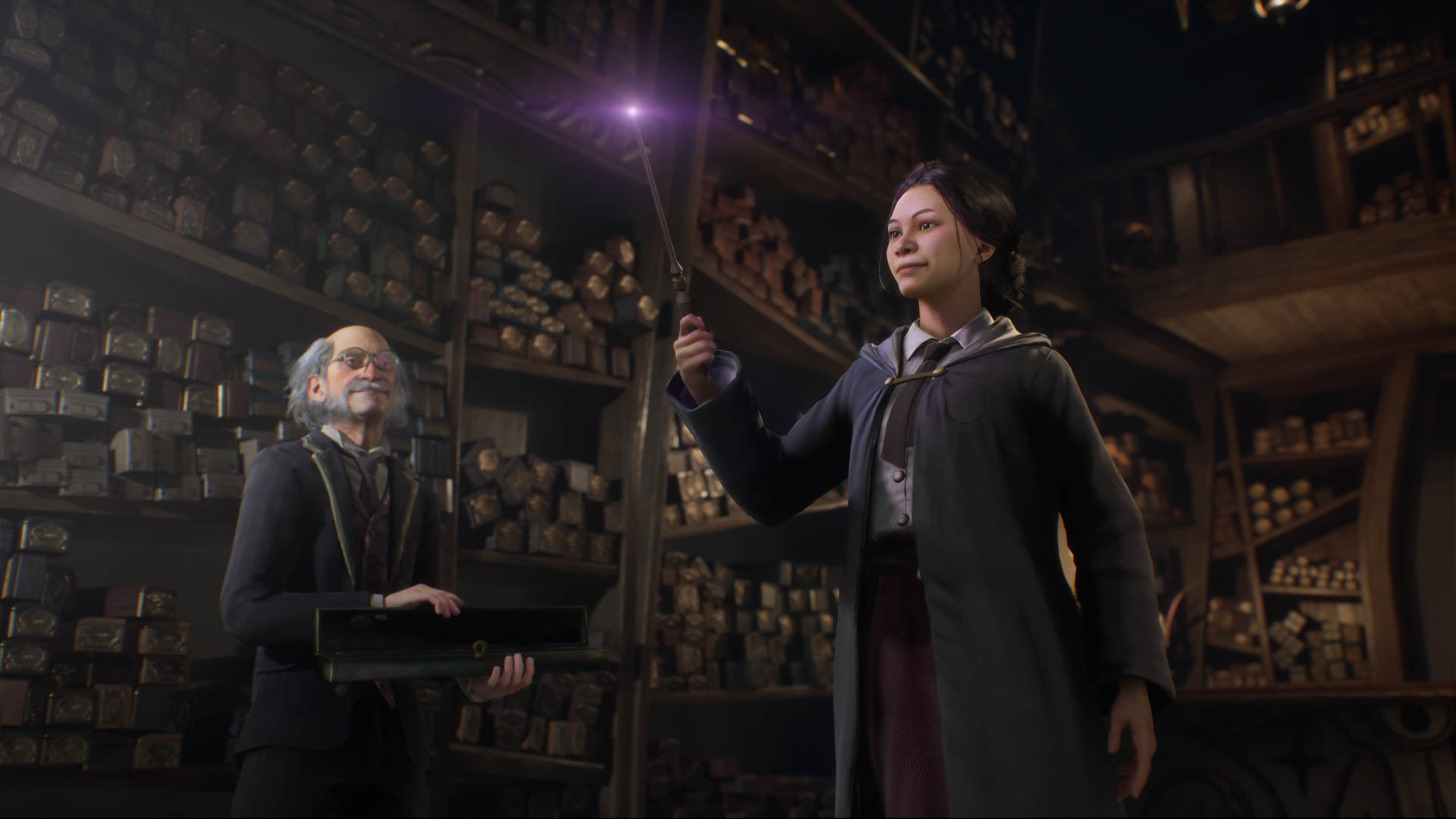
As the internet and social media grew in popularity, a discussion about the goblins in Harry Potter grew with it. While the books didn’t provide much detail about the banking species, the movies painted a much clearer picture, one that many associated with Jewish stereotypes. Specifically, large hooked noses, controlling the wealth, and being greedy. There has been no acknowledgment or apology of the alleged accidental connection from Rowling about this. But let’s discuss how and WHY people are forming these connections, starting with the history of the goblin mythos.
Goblins are heavily featured in many European countries’ folklore and vary from mischievous spirits to malevolent thieves. Some stories tie the origin of goblins to Judaism. For instance, Cornish mythos suggests that Knockers (the Cornish form of goblins) came from the spirits of Jews who worked in the Cornish mines during the Middle ages. In the works of G. K. Chesterton, author of the 1908 work, Orthodoxy, the use of goblins and Jews was fluid. Even in Dickens’ work, Oliver Twist, Fagin the thief is described as “The Jew.” Many of these myths of goblins didn’t carry over to the new world because that basis, the spirits of Jews, didn’t make sense. But that’s not the full origin of the Goblin we all think of today.
“During the 6th century, the Church’s teachings and trying to convince Jews to convert to Catholicism is one of the primary origins of the people of the Jewish faith being painted with an ugly, otherly brush.” Dr. Rabbi Jo David, an independent Rabbi, stated.

“That whole concept of the Jew as misshapen and ugly, actually comes from early Christian writings…. The way the church looked at the Jews, the more that they [the Jews] continued to reject Catholicism, and then later Protestantism, the more ugly they became; the more that the church preached about their ugliness and their corruption and the corruption of their soul. The Church’s teachings projected that because Jews didn’t accept Jesus, they were cursed. And that’s why they didn’t have a homeland. And that’s why they roamed the Earth. That’s why they were a stateless people…. They’re dirty, how can they be clean, they have no place to wash because they don’t have a land that’s their own. It’s their fault. If they would only come to terms with the idea that Jesus could save them. Everything would be fine, but they don’t. No matter what the church [did] to try to get Jews to convert to Catholicism, they won’t.” Rabbi David explained further.
For further history, during the Middle Ages, Jews were given the task of bankers, tax collectors, and general dealings of money because it was seen as a task below the Crusaders and landowners. “This was what happened in the Middle Ages. The Nazis use the same kind of images…. But over the years, they’ve been used in various propaganda pieces to show a hook nose, some of them are even green, which connotates money”, Rabbi Josh Kalev, Rabbi for the Congregation Tikvat Jacob Beth Torah, mentioned when discussing more recent origins of the goblin-like imagery of Jews.
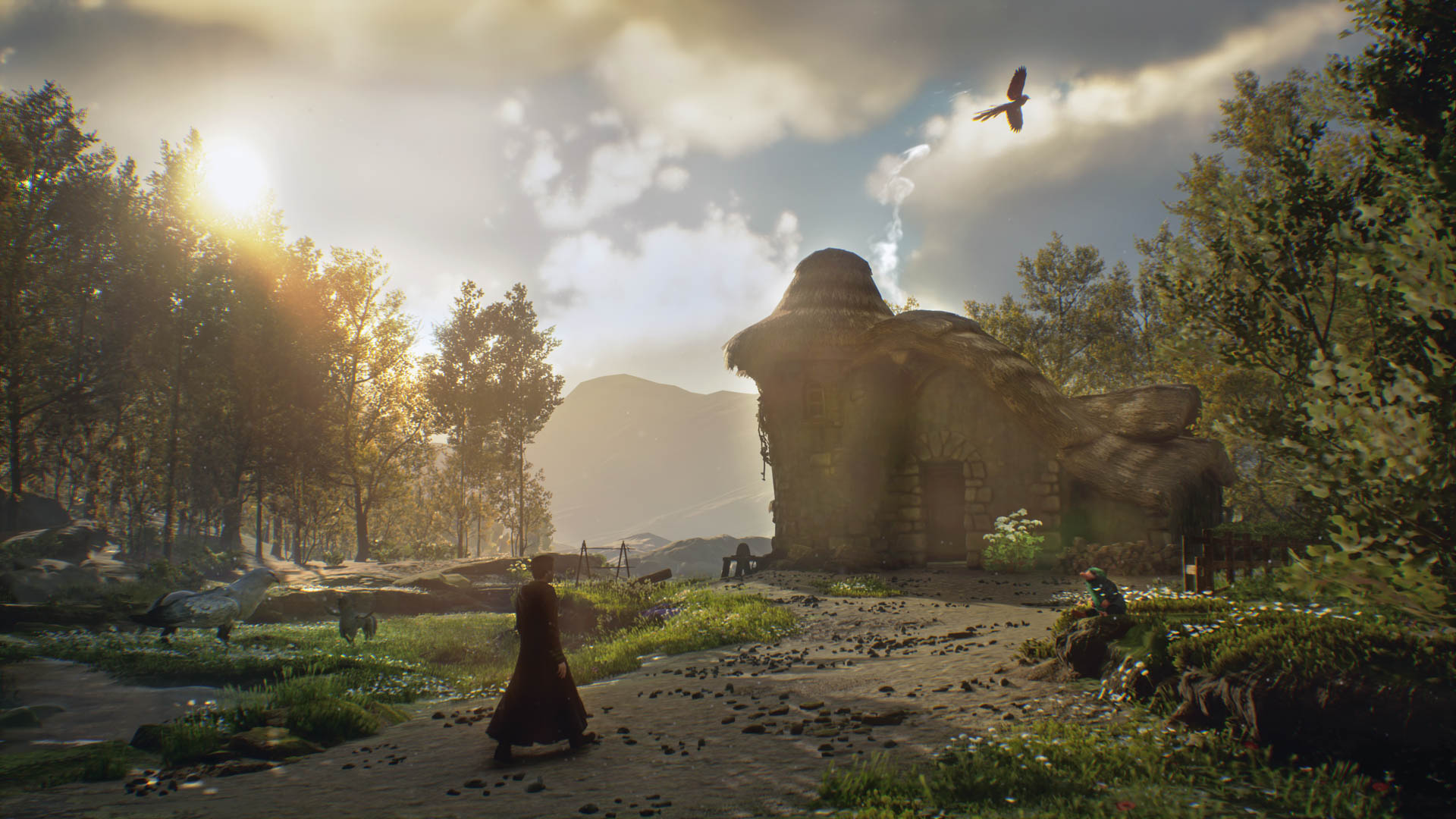
Let’s take all of those learnings and bring them forward to the modern-day. You can begin to see the common occurrences with how Goblins are portrayed in modern media. In World of Warcraft, the Goblins’ starting zone is all about greed and getting on top to escape a disaster (as well as their racial passive giving them more gold). The Goblin race’s only job in the Wizarding World Universe, as depicted so far, is running the bank. They’re coin minters and renowned metalsmiths. Specifically in Harry Potter and the Philosopher’s Stone, Goblins are described as “short and dark-skinned. They have very long fingers and feet, and some have pointed beards”. In Harry Potter and the Goblet of Fire, we learn that Goblins also have “dark, slanted eyes”. For the film adaptations, Goblins were given pale skin, pointy noses, and more exaggerated features. As Rabbi David also said: “And if you are creating a character, and you want to establish something about them, you use classical images.”
So, that isn’t to say that the Goblins are directly antisemitic, or carry stereotypical tropes. Goblins are very much rooted in their own lore, and time and again get tied to Judaism because of antisemitism; but it comes back to intent. Did the original author, J.K. Rowling, intend to represent Goblins with Jewish stereotypical characteristics? As I mentioned before, Rowling hasn’t commented on this matter. Dave Rich, the director of policy at the UK Jewish charity, Community Security Trust, has strong feelings about it.
In his comments to The Rolling Stone, Rich said, “I don’t believe J.K. Rowling is an anti-Semite or is responsible for creating anti-Semitic caricatures. There is nothing in her record to suggest that she holds anti-Semitic views: quite the opposite in fact, as she has spoken out consistently and repeatedly in support of the Jewish community and against anti-Semitism when there was no need for her to do so. Consequently, I think in this case, her goblins are just goblins”.
This was in response to Jon Stewart calling the Goblins antisemitic on his Apple TV+ show’s supplemental podcast, The Problem With Jon Stewart. Dan Kahan, of PopDust, commented similarly in 2019, “The Gringotts goblins are totally coded as anti-Semitic Jewish stereotypes. Here’s the thing. JK Rowling almost definitely didn’t do this intentionally. If anything, the Harry Potter novels are, by and large, anti-fascist in nature. Voldemort is a dictator aiming to eradicate half-blooded wizards—it doesn’t get more blatant than that. Rowling also borrowed and pastiched from all sorts of fantasy and folklore while writing Harry Potter, so it’s likely that a lot of the goblins’ more anti-Semitic features are actually related to older fantasy fare surrounding bankers.”
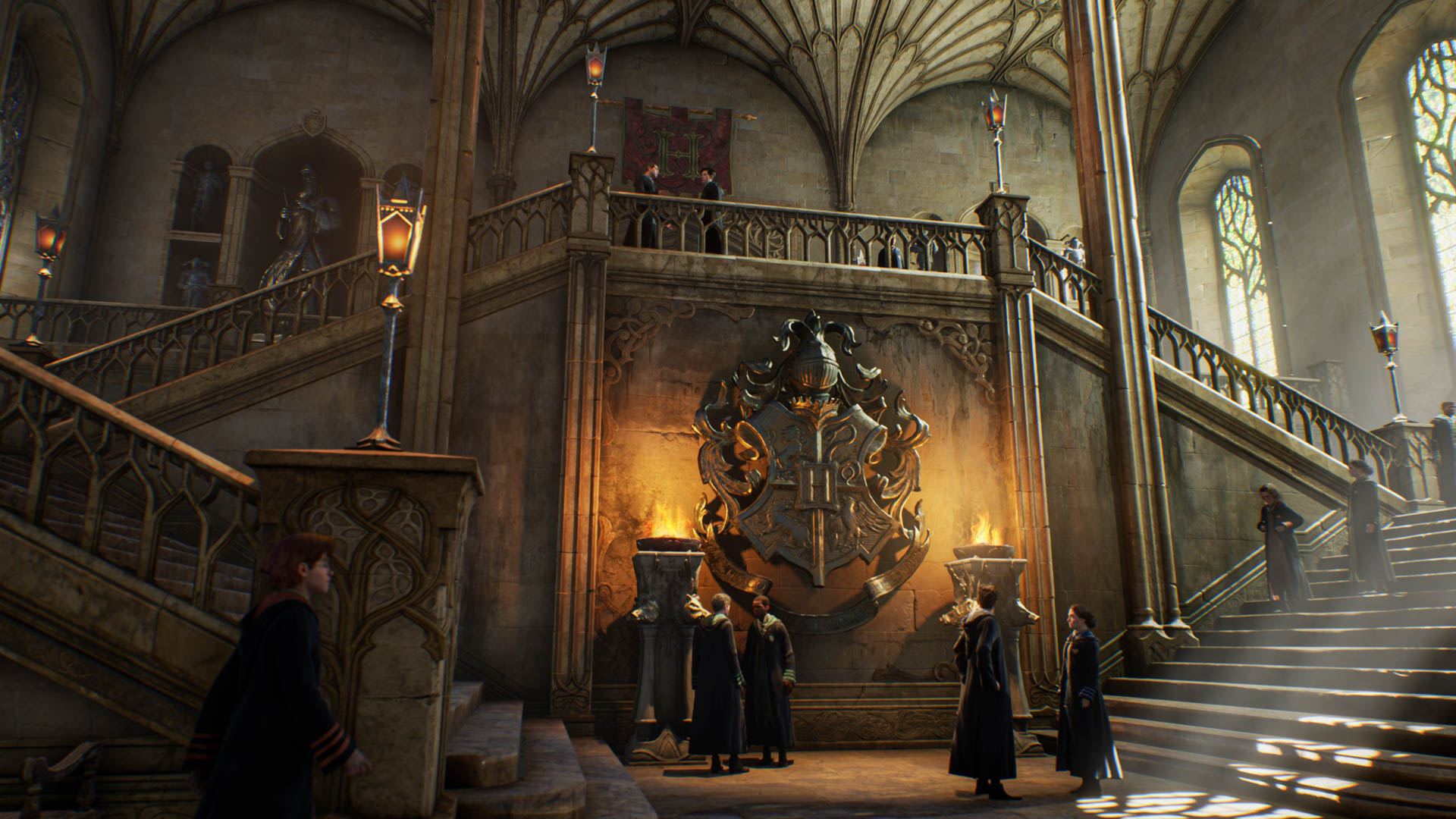
This leads to the issue with Hogwarts Legacy. In the newest gameplay trailer, we were introduced to one of the primary villains, the goblin Ranrok. Ranrok is leading a Goblin rebellion against the Wizarding World and teams up with the dark wizards to achieve his goal. But his only spoken line is about kidnapping the main playable character, a 15-year-old child who learned late that they have magical powers. This simple speech and previous relations of Goblins to Jews led several people and publications, like Daily Dot, to call Ranrok a very clear example of antisemitism. Why though? Well, one of the most horrific antisemitic tropes used to villainize Jews is Blood Libel, or the accusation that Jews kidnapped and murdered non-Jews. Similar to certain heinous beliefs in today’s society, like anti-women’s choice movements, that get cemented in the idea of doing vile acts because they are believed to lead to ultimately good conclusions because they save children. This one common sentiment has been a main driving factor throughout the middle ages and early modern times to target and incite violence against the Jewish people.
“So when you have a Jewish caricature, saying I’m going to steal a child, I’m going to kidnap a child. Yes, that evokes the blood libel. They just either aren’t aware or they didn’t bother to run this through any kind of sensitivity read”. Josh Silverman said. Mike Futter, of F-Squared Consultancy, made a similar point, “…Seeing literal Nazi propaganda used as the basis of the main villain of this game…. I was trying to be nice about this game on social media, [but] I can’t. gloves are off”. Both of these points are summarized well by Rabbi Kalev, “Antisemitism is at an all-time high right now. The Anti-Defamation League just came out with its report, which is so disturbing… And the fact of the matter is, over time, the goblin has turned into a caricature of the Jew, in so many anti-semitic pieces of literature.” I provided Rabbi Kalev, who enjoys to play games in his free time the context of the outrage with Hogwarts Legacy. He added, “It sounds to me like, this video game, didn’t think too deeply about the effects and the connections that could be made between the Jew and the goblin. But the fact that these goblins, the goblins of Harry Potter, have been ostracized and are leading a rebellion, and are in charge of the bank. So I think there needs to be a sensitivity when we create a video game or a movie to think about, how did these characters connect to various antisemitic tropes?”
This wasn’t the overall sentiment though from everyone I talked to. Jason Schreier of Bloomberg, said, “Harry Potter has a problematic depiction of a lot of things (in reference to Cho Chang and other marginalized characters in the books)….I’m honestly more offended by that one JK Rowling tweet where she was like ‘Anthony Goldstein, Jewish wizard.’” When discussing Ranrok, Schreier said, “I don’t think it’s fair to just to just kind of assume what it’s going to be about based on the trailer. That said, I hope they were delicate and how they approach this, recognizing that there could be Jewish stereotypes to play here. And I hope they at least spoke to a Jewish person or two about this stuff before writing [this] story”.
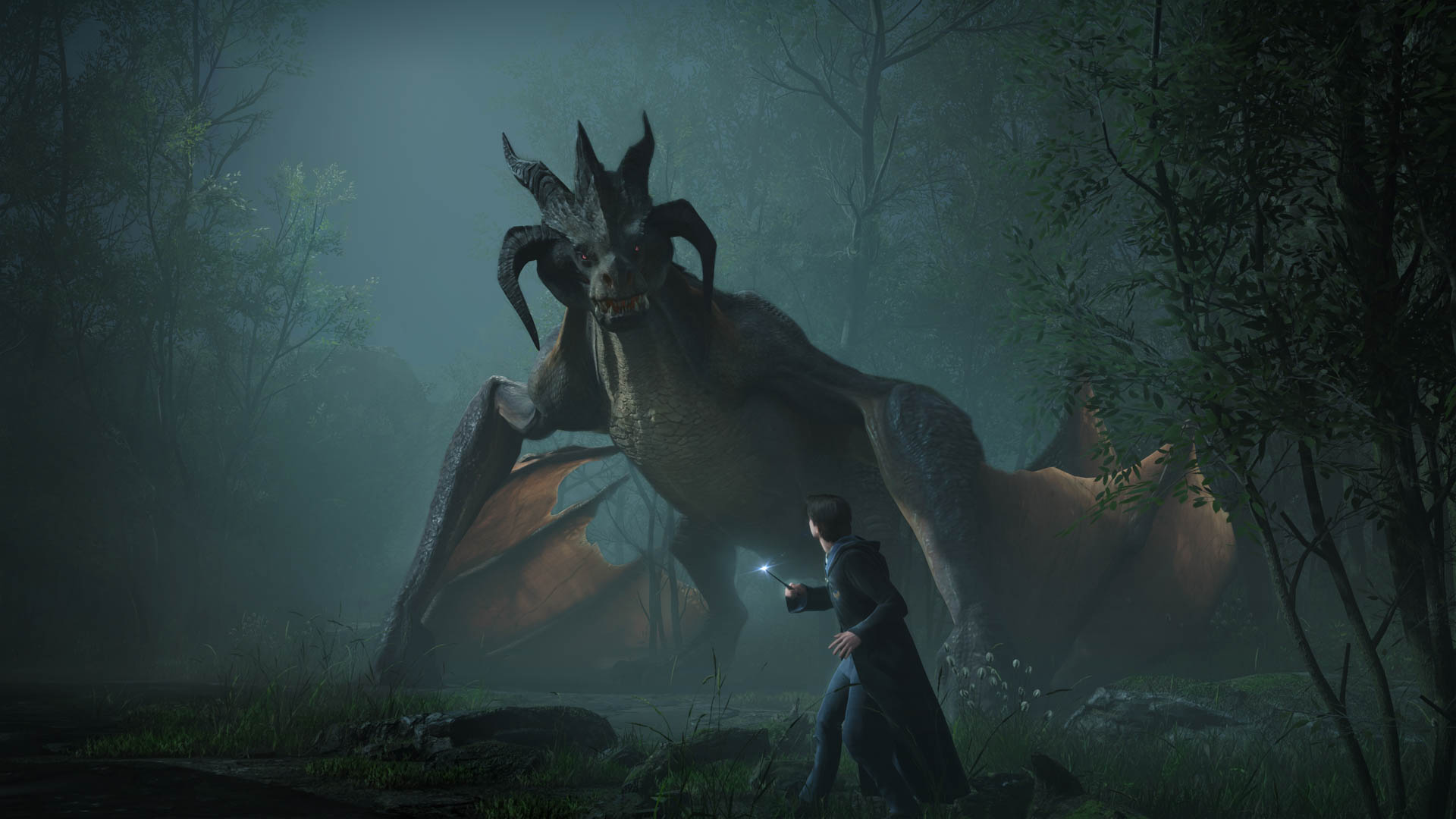
Rabbi David elaborated further on this point, saying, “Just because a character has a hooked nose does not mean that that character is supposed to be Jewish. Just because a character is focused on money does not mean that character is being stigmatized and made a Jewish stereotype….Just because people are either wealthy or have money or work in banks, does not make them Jewish. Why can’t we say ‘oh, that’s a WASP (White Anglo-Saxon Protestant) stereotype?’” Rabbi David clarified further, “There is enough real antisemitism in this world that we run into every day without going to look for it in a way that perpetuates these antiquated stereotypes.”
That’s not to say that those who are concerned about antisemitism and Jewish stereotypes in Harry Potter, that their feelings aren’t valid. For some background on myself, I was born and raised in a mixed household of Judaism and Agnostic beliefs. It wasn’t until I was 6 that I started going to Temple on a regular basis. My beliefs are very tied to the Reform denomination of Judaism, which has adapted or abandoned many traditional beliefs to adapt Judaism for the modern world. I was like many who didn’t directly connect the goblins in Harry Potter to the Jewish faith until I was much older. As a cis-white male presenting person, I didn’t think about media that way yet when I first got fully engrossed in the Harry Potter universe. After becoming aware of it, I was concerned about the goblins being portrayed as they were. As for Ranrok, I didn’t read his speech about kidnapping the main playable character as Blood Libel. However, as I and many others slowly became aware of this, incidents like this could be evident of a larger need for media literacy. Being able to read beyond what is plainly shown to us. Situations like Ranrok in Hogwarts Legacy also show the importance of sensitivity training and consulting with communities who are either intended to be represented or feel slighted by the planned representation to course correct. In all levels of media, not only game development.
Regardless, Jewish communities were hurt by what was shown in the trailer for Hogwarts Legacy. Without Avalanche Studio’s comments on the matter, we are in limbo about not only the intent of Ranrok but the general representation of the Goblin race for this video game. Also, while we don’t know the true scope and story of Ranrok, calls from the Jewish community should keep people on edge if they do proceed to play this game. I want to end on a quote from Juliancito, a Jewish Trans streamer who I had the pleasure of speaking with for this article. “All struggles need to come together in order to prevail. As somebody who is affected by both. If somebody were to say to me, Hey, you know, you can only focus on one thing right now. I would focus on the transphobia”.
As far as Ranrok is concerned, while there are undertones of antisemitism, there is no clear evidence of intent. This doesn’t excuse the team from their responsibility of doing research to prevent these implications from being so strong. If the intent becomes as evident as JK’s blatant attacks on trans rights, then serious actions have to be taken toward the Wizarding World franchise. For now, play the game at your own discretion, but be mindful of what you’re supporting. we’re all fighting for equality, and we are all in this fight together.
If you like what we do here at Uppercut, consider supporting us on Patreon. Supporters at the $5+ tiers get access to written content early.






Really well made article! I see the discourse online and I struggle to find someone giving this a fair examination. I didn’t grow up with Harry Potter, but the game looked interesting to me. I was looking for something exactly like this to understand in what ways the representation in game is problematic. I agree that it seems like whatever is there is unintentional, but I will not preorder or anything so that I can see if the developers will address any of the antisemitic claims or handle the goblin characters in a respectful way. Thank you for taking the time to write this!
The trans community is asking their allie’s to do one simple east thing to support us: just don’t buy or play this game. We don’t care if you pirates it, stop giving it attention. If you claim to be an ally and cannot even do that…. you are not an ally. You’re a child who can’t critically think.